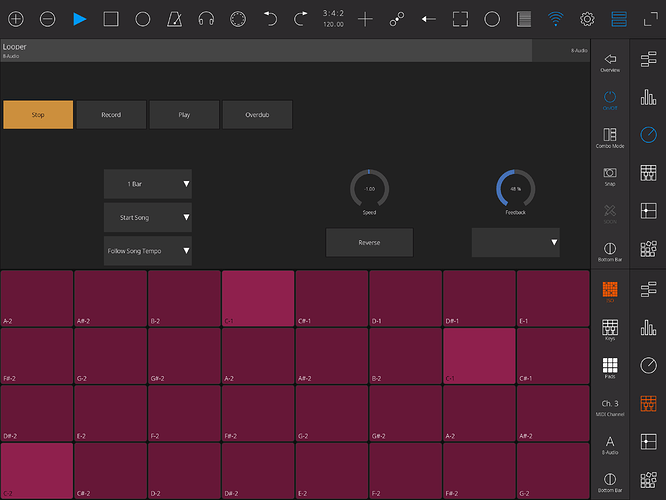It seems like you’ve re-created most of the visuals for the majority of the built-in ableton devices, but I was wondering why there’s no looper yet? It’s very difficult to use with only the default fader controls, and this device has been in Live for a long time. I thought with the emphasis on live performance, this would definitely be an important one.
Hi, the looper is unfortunately not part of the extended Device Live API (like Simpler, Wavetable ) and we cannot create a visual interface with the parameter provided by Live’s standard API. Believe me, we wish we could. Best
I see, that’s too bad. I wonder how this thing works then. http://www.synthtopia.com/content/2018/12/08/ultimate-pedal-board-for-ableton-live/
It can display the loop position of a looper using LED’s, that would be helpful to even just have that amount of visual feedback within Touchable. Maybe they’re using a different method?
Interesting device ! i watched the video and we can see that he developed a max for live device to control the looper witch name is loopercontrol . I do not know if max for live have “more” access to the live api than a midiscript but that could be the reason ?
Yeah that would great to have a “device” for the looper if possible or to have the ability to create one with the device editor .
But first thing first . Make touchable stable? and see what’s next ! 
Agreed on the make it stable point!!
I actually created my own looper controller patch with Max for Live and it looks like the only feedback you can really get is whether it’s stopped, playing, overdubbing or recording. You can’t see the actual point in the loop where you are, or even control most of the controls.
I was able to overcome these limitations for my live template by midi mapping all the looper controls to midi CC’s, and using a virtual midi device to do midi loopback from a max device back into ableton. Then, I created a visual feedback patch that basically just follows the quantization of the set, and then restarts the looper when quantization changes, so as long as you’re using global quantization to make your loops, the visual feedback will be accurate. It looks like this hardware looper also uses a max patch, and it probably uses similar workarounds to keep the visual feedback synced up with looper, without being able to actually get that info directly from looper.
So it was quite the workaround!! It does seem like this is majorly ableton’s fault, I might build my own looper from scratch in M4L one day when I have time…
Could you share the Max patch (or instructions to make the patch) that shows whether the looper it’s stopped, playing, overdubbing or recording? Those functions alone would be very helpful.
Also would be helpful to hear again from the devs about this , maybe they can implement some similar workaround to what the hardware pedalboard uses? This would be one of my favorite uses of touchable. @Pascal
Also, would it be possible to use touchable to see the status’ of multiple looper devices (or max for live devices that show some indications for loopers) at once? I think that this kind of thing looked possible with the custom templates in touchable, but had trouble getting that feature to work a few weeks ago. Might also work with just one big max for live device too, now that i think about it… and also I think this is possible with multiple M4L popup windows too, but it would make the window management a lot simpler if it’s possible with touchable.
This is basically what I based my patch on:
http://www.maxforlive.com/library/device/3173/loopercentral
It simply monitors a series of loopers and puts it into a unified GUI so you can see them all at once.
Now I’m actually thinking of building my own looper, based on another patch: http://www.maxforlive.com/library/device/1440/timestretch-looper
This is a full remake of the looper device in max for live, except with timestretching. Since it’s built in max for live, you can completely modify it to your needs, if you know max for live of course. It’s pretty well documented as well.
A little more on this in case anyone cares…
I spoke with a Ben Casey from Ableton at the New York Ableton User Meetup this past Thursday, and word on the street is that the reason the Looper device is so weird and hasn’t been updated is because the ableton employee who originally coded it is the guy who left to start Bitwig, so I guess he’d be the only one that would be able to fix it. So they basically would need to create a new looper device from scratch if they want to improve the looping experience for users. He also kind of speculated that since so many users use looping differently, they might better off creating a new version in Max for Live so it that it can be modified by users.
Anyway, apparently that’s the explanation for why the looper isn’t easily accessible by the API and things of that nature.
It’s frightening… Ableton don’t know how their looper works !!! 
 .you know what, i have bitwig to
.you know what, i have bitwig to

